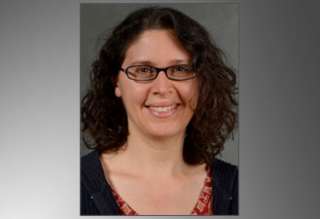- Our Story
- Publications & Resources
- Publications & Resources
- Publications
- IEEE Signal Processing Magazine
- IEEE Journal of Selected Topics in Signal Processing
- IEEE Signal Processing Letters
- IEEE Transactions on Computational Imaging
- IEEE Transactions on Image Processing
- IEEE Transactions on Information Forensics and Security
- IEEE Transactions on Multimedia
- IEEE Transactions on Signal and Information Processing over Networks
- IEEE Transactions on Signal Processing
- IEEE TCI
- IEEE TSIPN
- Data & Challenges
- Submit Manuscript
- Guidelines
- Information for Authors
- Special Issue Deadlines
- Overview Articles
- Top Accessed Articles
- SPS Newsletter
- SigPort
- SPS Resource Center
- Publications FAQ
- Blog
- News
- Dataset Papers
- Conferences & Events
- Community & Involvement
- Professional Development
- For Volunteers
- Information for Authors-OJSP
-
Home
Waveforms for Computing Over the Air: A groundbreaking approach that redefines data aggregation
Ode to Masterfully Written Textbooks: And remembering Simon Haykin [From the Editor]
Conferences Events IEEE Signal Processing Magazine IEEE SPL Article IEEE TIFS Article IEEE TMM Article IEEE TSP Article Jobs in Signal Processing Lectures Machine Learning Seasonal Schools Signal Processing News SPM Article SPS Distinguished Lectures SPS Newsletter Article SPS Webinar SPS Webinars SPS Webinar Series Webinar webinars -
Our Story
What is Signal Processing?

The technology we use, and even rely on, in our everyday lives –computers, radios, video, cell phones – is enabled by signal processing. Learn More » -
Publications & Resources
-
SPS Resources
- Signal Processing Magazine The premier publication of the society.
- SPS Newsletter Monthly updates in Signal Processing
- SPS Resource Center Online library of tutorials, lectures, and presentations.
- SigPort Online repository for reports, papers, and more.
- SPS Feed The latest news, events, and more from the world of Signal Processing.
-
SPS Resources
-
Conferences & Events
-
Community & Involvement
-
Membership
- Join SPS The IEEE Signal Processing Magazine, Conference, Discounts, Awards, Collaborations, and more!
- Chapter Locator Find your local chapter and connect with fellow industry professionals, academics and students
- Women in Signal Processing Networking and engagement opportunities for women across signal processing disciplines
- Students Scholarships, conference discounts, travel grants, SP Cup, VIP Cup, 5-MICC
- Young Professionals Career development opportunities, networking
- Get Involved
-
Technical Committees
- Applied Signal Processing Systems
- Audio and Acoustic Signal Processing
- Bio Imaging and Signal Processing
- Computational Imaging
- Image Video and Multidimensional Signal Processing
- Information Forensics and Security
- Machine Learning for Signal Processing
- Multimedia Signal Processing
- Sensor Array and Multichannel
- Signal Processing for Communication and Networking
- Signal Processing Theory and Methods
- Speech and Language Processing
- Technical Working Groups
- More TC Resources
-
Membership
-
Professional Development
-
Professional Development
- Signal Processing Mentorship Academy (SigMA) Program
- Micro Mentoring Experience Program (MiME)
- Distinguished Lecturer Program
- Distinguished Lecturers
- Distinguished Lecturer Nominations
- Past Lecturers
- Distinguished Industry Speaker Program
- Distinguished Industry Speakers
- Distinguished Industry Speaker Nominations
- Industry Resources
- IEEE Training Materials
- Jobs in Signal Processing: IEEE Job Site
-
Career Resources
- SPS Education Program Educational content in signal processing and related fields.
- Distinguished Lecturer Program Chapters have access to educators and authors in the fields of Signal Processing
- Job Opportunities Signal Processing and Technical Committee specific job opportunities
- Job Submission Form Employers may submit opportunities in the area of Signal Processing.
-
Professional Development
-
For Volunteers
-
For Board & Committee Members
- Board Agenda/Minutes* Agendas, minutes and supporting documentation for Board and Committee Members
- SPS Directory* Directory of volunteers, society and division directory for Board and Committee Members.
- Membership Development Reports* Insight into the Society’s month-over-month and year-over-year growths and declines for Board and Committee Members
-
For Board & Committee Members
Popular Pages
Today's:
- Information for Authors
- (ICME 2026) 2026 IEEE International Conference on Multimedia and Expo
- Information for Authors-SPL
- IEEE Transactions on Image Processing
- IEEE Transactions on Multimedia
- (ASRU 2025) 2025 IEEE Automatic Speech Recognition and Understanding Workshop
- Guidelines
- Membership
- IEEE JSTSP Special Issue on Advanced AI and Signal Processing for Low-Altitude Wireless Networks
- Call for Papers for ICASSP 2026 Now Open!
- IEEE Transactions on Information Forensics and Security
- Conference Call for Papers
- IEEE Journal of Selected Topics in Signal Processing
- Publications & Resources
- Editorial Board
All time:
- Information for Authors
- Submit a Manuscript
- IEEE Transactions on Image Processing
- IEEE Transactions on Information Forensics and Security
- IEEE Transactions on Multimedia
- IEEE Transactions on Audio, Speech and Language Processing
- IEEE Signal Processing Letters
- IEEE Transactions on Signal Processing
- Conferences & Events
- IEEE Journal of Selected Topics in Signal Processing
- Information for Authors-SPL
- Conference Call for Papers
- Signal Processing 101
- IEEE Signal Processing Magazine
- Guidelines
Last viewed:
- Community & Involvement
- Our Story
- Publications FAQ
- (ASRU 2025) 2025 IEEE Automatic Speech Recognition and Understanding Workshop
- Guidelines
- Call for Papers for ICASSP 2026 Now Open!
- Information for Authors
- About IEEE Transactions on Signal Processing
- PhD/Postdoc positions in the DNCS Group @ University of Cyprus
- Postdoc in Signal Processing and Acoustics
- Signal Processing Mentorship Academy (SigMA) Program
- Signal Processing Cup
- PhD Opportunities in AI for Digital Media Inclusion (Deadline 30 May 2024)
- SPS Travel Grants
- (ICIP 2026) 2026 IEEE International Conference on Image Processing
Top Reasons to Join SPS Today!
1. IEEE Signal Processing Magazine
2. Signal Processing Digital Library*
3. Inside Signal Processing Newsletter
4. SPS Resource Center
5. Career advancement & recognition
6. Discounts on conferences and publications
7. Professional networking
8. Communities for students, young professionals, and women
9. Volunteer opportunities
10. Coming soon! PDH/CEU credits
Click here to learn more.
The Latest News, Articles, and Events in Signal Processing
The IEEE Signal Processing Society (SPS) is honored to announce the elevation of 72 of its members to the grade of IEEE Senior Member. These members have demonstrated outstanding professional performance, exhibited professional maturity through long-term experience, and established themselves as leaders in their respective IEEE-designated fields of interest.
IEEE SPS has built a streamlined mechanism for employers to add a job announcement by simply filling in a simple job opportunity submission Web form related to a particular TC field. To submit job announcements for a particular Technical Committee, the submission form can be found by visiting the page below and selecting a particular TC.
The Signal Processing Society (SPS) has 12 Technical Committees that support a broad selection of signal processing-related activities defined by the scope of the Society.
It is my pleasure to announce that the IEEE Signal Processing Society (SPS) annual election will commence on 16 August, and your vote is more important than ever! This year, all eligible SPS Members will vote for the next President-Elect (term 1 January 2022 through 31 December 2023), in addition to the Regional Directors-at-Large for Regions 7 & 9 and 10 (term 1 January 2022 through 31 December 2023), and Members-at-Large (term 1 January 2022 through 31 December 2024) of the IEEE Signal Processing Society Board of Governors (BoG).
In accordance with the Bylaws of the IEEE Signal Processing Society, I am writing to solicit nominations for the Awards Board and the Nominations and Appointments (N&A) Committee. This year, the Society will be filling THREE positions on the N&A Committee for the term 2022-2023 and TWO positions on the Awards Board for the term 2022-2024. Nominations must be received no later than Friday, 24 September 2021.
The IEEE Signal Processing Society has developed guidelines related to SPS Chapter social media and Chapter Activities.
Satoshi Nakamura received his B.S. degree in electronics engineering from Kyoto Institute of Technology, Kyoto, in 1981. He received his Ph.D. in informatics from Kyoto University in 1992. He was the Department Head and Director of ATR Spoken Language Communication Research Laboratories, Kyoto, Japan in the period of 2000-2008.
This webinar will demonstrate how deep learning can solve difficult communication problems that prior approaches often fail with two case studies. The first half will discuss a novel iterative BP-CNN architecture for channel decoding under correlated noise. This architecture concatenates a trained convolutional neural network (CNN) with a standard belief-propagation (BP) decoder.
Lecture Date: October 19, 2021 (Virtual Lecture)
Chapter: Hyderabad
Chapter Chair: Abhinav Kumar
Topic: Embeddings for Spoken Words
Lecture Date: September 28, 2021
Chapter: Oregon
Chapter Chair: Jinsub Kim
Topic: Data Fusion Through Matrix and Tensor Decompositions:
Overview of Solutions, Challenges, and Prospects

2 x Professor / Reader of Machine Learning and Artificial Intelligence
Department of Computer Science
University of Surrey
Guildford, UK
In accordance with the Bylaws of the IEEE Signal Processing Society, I am writing to solicit nominations for the Awards Board and the Nominations and Appointments (N&A) Committee. This year, the Society will be filling THREE positions on the N&A Committee for the term 2022-2023 and TWO positions on the Awards Board for the term 2022-2024. Nominations must be received no later than Friday, 24 September 2021.
It is my pleasure to announce that the IEEE Signal Processing Society (SPS) annual election will commence on 16 August, and your vote is more important than ever! This year, all eligible SPS Members will vote for the next President-Elect (term 1 January 2022 through 31 December 2023), in addition to the Regional Directors-at-Large for Regions 7 & 9 and 10 (term 1 January 2022 through 31 December 2023), and Members-at-Large (term 1 January 2022 through 31 December 2024) of the IEEE Signal Processing Society Board of Governors (BoG).
The IEEE Statistical Signal Processing (SSP) workshop is one of the foremost international conferences on statistical signal processing and its applications. The 22nd edition of SSP will be held from 3-6 July 2022 in Hanoi, the capital of Vietnam: a 1000-year-old city with a mix of rich history and modern appeal and proud of local culture and cuisine.
We study the dual problem of image super-resolution (SR), which we term image compact-resolution (CR). Opposite to image SR that hallucinates a visually plausible high-resolution image given a low-resolution input, image CR provides a low-resolution version of a high-resolution image, such that the low-resolution version is both visually pleasing and as informative as possible compared to the high-resolution image.
The Signal Processing Society (SPS) has 12 Technical Committees that support a broad selection of signal processing-related activities defined by the scope of the Society.
The IEEE Signal Processing Society has developed guidelines related to SPS Chapter social media and Chapter Activities.
Recognized worldwide as one of the leading experts in artificial intelligence, Yoshua Bengio is most known for his pioneering work in deep learning, earning him the 2018 A.M. Turing Award, “the Nobel Prize of Computing,” with Geoffrey Hinton and Yann LeCun. He is a Full Professor at Université de Montréal, and the Founder and Scientific Director of Mila - Quebec AI Institute.
Pages
SPS Social Media
- IEEE SPS Facebook Page https://www.facebook.com/ieeeSPS
- IEEE SPS X Page https://x.com/IEEEsps
- IEEE SPS Instagram Page https://www.instagram.com/ieeesps/?hl=en
- IEEE SPS LinkedIn Page https://www.linkedin.com/company/ieeesps/
- IEEE SPS YouTube Channel https://www.youtube.com/ieeeSPS
Home | Sitemap | Contact | Accessibility | Nondiscrimination Policy | IEEE Ethics Reporting | IEEE Privacy Policy | Terms | Feedback
© Copyright 2025 IEEE - All rights reserved. Use of this website signifies your agreement to the IEEE Terms and Conditions.
A public charity, IEEE is the world's largest technical professional organization dedicated to advancing technology for the benefit of humanity.




















